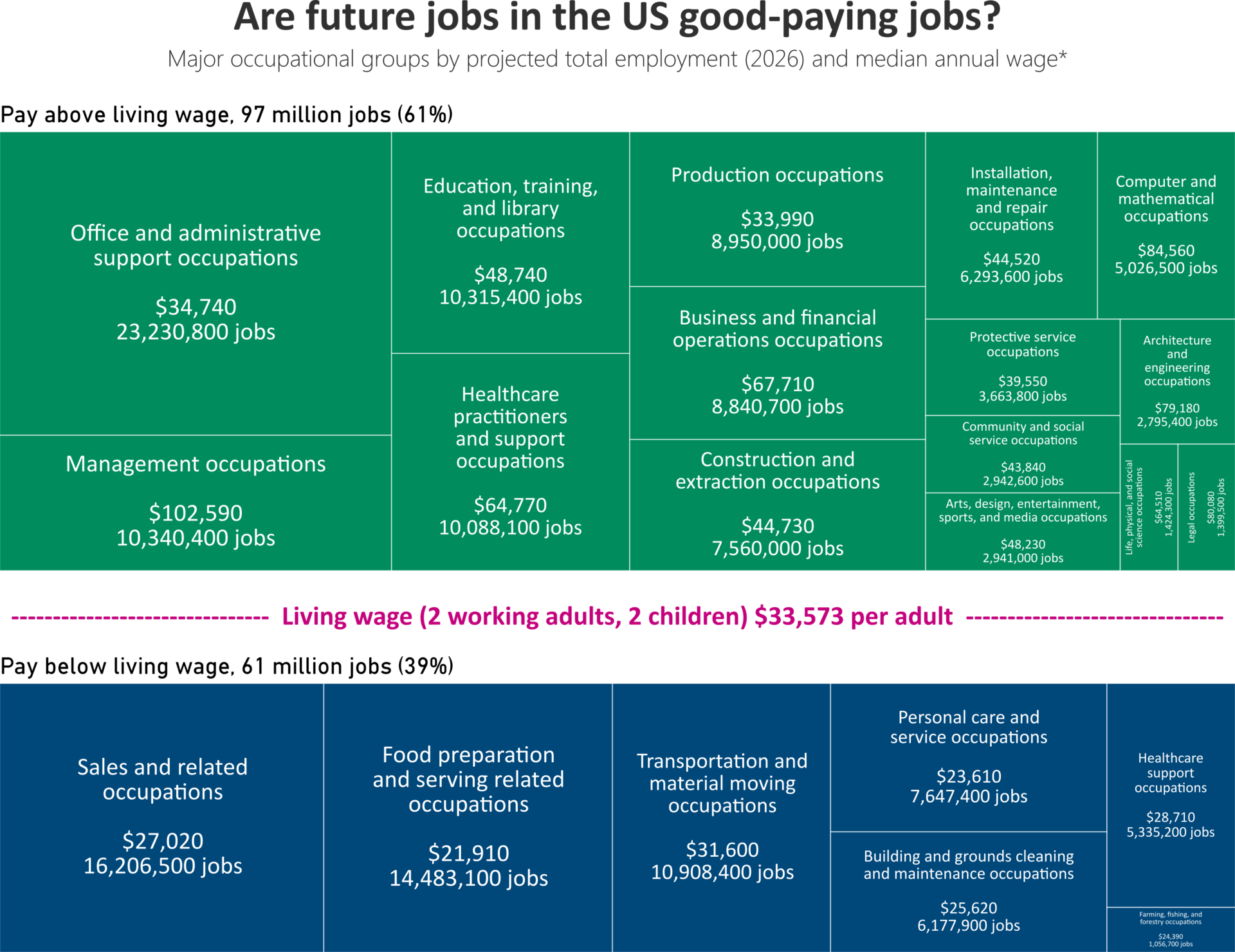This is the 125th year that Labor Day is being recognized in the US as an official federal holiday. As we again take the time to celebrate work and the people working for a living, we should remember and honor the accomplishments of our labor movement forebears. These working women and men of extraordinary determination and courage waged the battles that secured rights and working conditions we often take for granted today, such as an eight-hour workday, dramatic improvements in workplace safety, an end to child labor, retirement and other employment benefits, and, of course, weekends.
More recently, however, participation in labor organizations and the labor movement has been on the decline. The upshot? Researchers at The Hamilton Project, a policy group at The Brookings Institution, conclude that the dramatic drop in US private-sector union density, which fell from 24.2% in 1973 to 6.4% today, reduced American workers’ bargaining power and contributed to growing economic inequality.
For most US workers, working hard and playing by the rules has yielded limited and declining returns over the past several decades. According to research by Raj Chetty, the chances of a child earning more than their parents dropped from 90% in the post-World War II era to only 50% by the 1980s. And this troublesome trend of economic immobility continues. Millennials, despite being better educated than previous generations, have lower earnings and less wealth than their predecessors did at the same age.
The US unemployment rate is remarkably low, but today, roughly one in four working adults earns a wage that, even with full-time, year-round work, won’t lift a small family out of poverty. There is too much month and not enough paycheck for millions of households. Working people struggle with basic costs—housing, healthcare, child care, transportation–leaving little to cover the ever-escalating cost of higher education for oneself or one’s children.
Limited opportunity and systemic bias continue to disproportionately burden women and people of color. The gender pay gap has slightly narrowed. But women still earn only 80% of what men earn, and the pay gap widens at higher education levels. Black unemployment is generally twice that of white unemployment—and that holds true even when accounting for education level—and the typical black family has just 10% of the wealth of the typical white family.
Data suggest the trend of too few good jobs and too many poorly paying jobs may continue and possibly intensify. US Bureau of Labor Statistics data on median occupational wages, combined with some information from the MIT Living Wage Calculator, show in the graphic below that by 2026, an estimated 39% of projected employment will be in jobs where median earnings are insufficient to support a small family. (On mobile, pinch, expand, and slide to explore the wage projections for 2026 in various occupations.)

But this picture is just a projection based on current trends, which means that it can be changed. Work, after all, is a human endeavor, shaped by laws people choose to enact, business decisions people make, individual actions people choose to take, and values society shares.
To change our current trajectory, however, we need a range of ideas and actors to work together toward a common goal of good jobs. And there has been good news on this front recently. The Business Roundtable released an updated statement on the purpose of the corporation. Central to the group’s new commitment is the recognition that businesses have multiple stakeholders to serve, including employees. Meanwhile, the CEO of insurance giant Allstate, writing recently in The New York Times, called on fellow corporate leaders to focus on creating good-paying jobs. This shift in business perspective is critical, as good jobs are hard to come by when companies don’t recognize their employees as important and worthy stakeholders.
But we can’t rely on business alone. Policymakers at all levels should consider ways in which they could reduce the cost of living for working people, as well as how they could support working people with updated labor market regulations that protect workers’ interests. The cost and quality of essential services such as healthcare, transportation, child care, housing, and education are greatly influenced by the decisions of policymakers. These are all major and often challenging expense items for working individuals and their families. Child care, for example, constitutes 19.8% of expenditures for a family in the calculation of a living wage in the model used in the graphic above. Reducing this cost or other expenses for working people lessens the need for businesses to rapidly raise wages, something that can be especially challenging for smaller businesses.
Education institutions and civic organizations also play a critical role in helping people prepare for and connect to work. Worker advocacy and labor organizations can play a vital role both through collective bargaining and by providing a communication channel for workers to receive and share information with company leadership. Such a channel can provide workers the opportunity to offer insight into how to improve work processes and productivity and gain meaningful recognition for their contributions.
The future of work is today’s hot topic. What will we do to ensure that the next 125 years of labor history gives more Americans a fighting chance at the economic mobility we all deserve?
This piece was originally published in Quartz.
Share
Tweet Technology does not determine the future of work. People do. We need businesses, policymakers, and organizations to work together toward a common goal of good jobs.
Tweet Work is a human endeavor, shaped by the laws people write, the decisions they make, the actions they take, and the values we share. We can choose to make work better, now and in the future.
Tweet This #LaborDay and beyond, we need policies, practices, institutions, and solutions that improve the quality of work, so that everyone gets their chance to work for their American Dream.
Tweet Work is not working for too many Americans. Millions struggle with basic costs like housing, healthcare, child care, and transportation. And many full-time workers don’t earn enough to lift a family out of poverty.
Keep in touch
Learn how the Economic Opportunities Program is helping low- and moderate-income Americans thrive in a changing economy. Follow us on social media and join our mailing list to stay up-to-date on publications, blog posts, and other announcements.


